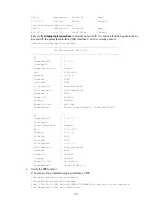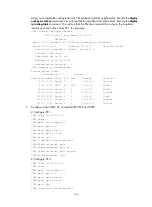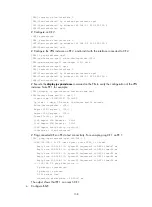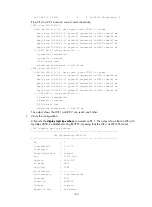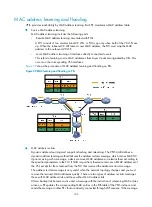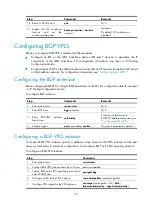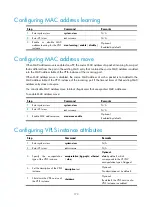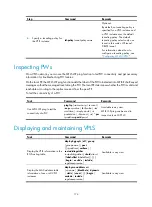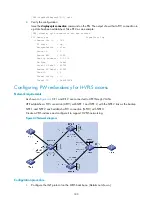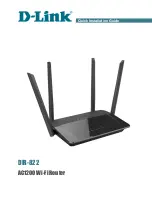
165
MAC address learning and flooding
VPLS provides reachability by MAC address learning. Each PE maintains a MAC address table.
•
Source MAC address learning
MAC address learning includes the following parts:
{
Remote MAC address learning associated with PWs
A PW consists of two unidirectional VC LSPs. A PW is up only when both of the VC LSPs are
up. When the inbound VC LSP learns a new MAC address, the PW must map the MAC
address to the outbound VC LSP.
{
Local MAC address learning of interfaces directly connected to users
This refers to learning source MAC addresses from Layer 2 packets originated by CEs. This
occurs on the corresponding VSI interfaces.
shows the procedure of MAC address learning and flooding on PEs.
Figure 39
MAC learning and flooding on PEs
•
MAC address reclaim
Dynamic address learning must support refreshing and relearning. The VPLS draft defines a
dynamic address learning method that uses the address reclaim message, which carries MAC TLV.
Upon receiving such a message, a device removes MAC addresses or relearns them according to
the specified parameters in the TLV. If NULL is specified, the device removes all MAC addresses of
the VSI, except for those learned from the PW that received the address reclaim message.
The address reclaim message is very useful when the network topology changes and you must
remove the learned MAC addresses quickly. There are two types of address reclaim messages:
those with MAC address lists and those without MAC address lists.
After a backup link becomes active and a message with the instruction of relearning MAC entries
arrives, a PE updates the corresponding MAC entries in the FIB table of the VPLS instance and
sends the message to other PEs that are directly connected through LDP sessions. If the message

